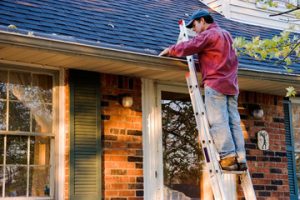Eliminating pest infestations helps protect your property, reduces the risk of disease, and provides a safe and comfortable environment. Some treatments are long-term, while others offer more immediate relief.
Regular garbage removal, cleaning up food and harborage areas, and sealing cracks and crevices are key. Also, trim bushes and other overgrown limbs to prevent pests from climbing to your home or building. Contact Ben’s Pest Control today to schedule your free inspection!

Chemical Pest Control
Chemical pest control utilizes synthetic chemicals to kill or repel a variety of insects, rodents, and other unwanted organisms. It can be a useful strategy when other methods aren’t successful or when pests threaten health and safety, damage property, or cause extensive loss of crops. When used correctly, it can also provide quick results. However, it’s important to understand the risks of this method before implementing it in your home or garden.
Many chemical pest control products work by disrupting the nervous system of targeted organisms. This ensures they die or stop doing harm, but it also poses a risk to human and pet health, as well as the environment. In addition, over time, pests can develop resistance to certain chemical pesticides, reducing their effectiveness.
Another type of chemical pest control is based on biological controls. Biological pest control uses natural predators and pathogens to target specific organisms, rather than the entire population. For example, nematodes are microscopic organisms that can be introduced to the soil to destroy caterpillars, grubs, and other pests that attack crops and gardens. These natural predators and pathogens are safer for the environment and humans than traditional chemical pesticides.
Other biological control strategies include introducing beneficial insects that will prey on pests. Ladybugs, for instance, eat aphids and other insects that wreak havoc on garden plants. Lacewings are another effective predator that eats aphids, caterpillars, and other soft-bodied insects in greenhouses and agricultural fields.
Physical pest control includes barriers and traps that prevent pests from entering or exiting a property. These can include sealing cracks and holes in walls, foundations, and other parts of the home. It can also involve setting traps that capture pests or using bait to lure them in. This type of pest control is often less expensive than other options but can be time-consuming and labor-intensive.
Organic pest control is an alternative to chemical control that relies on plant extracts, minerals, and other naturally occurring materials. While it can take more time to achieve results than chemical treatments, organic pest control can be safe for the environment, pets, and people if used properly. It can also be used alongside other pest control strategies, including Integrated Pest Management (IPM).
Biological Control
The goal of biological control is to introduce and establish natural enemies (parasitoid wasps, predatory insects, pathogens, and competing species) that suppress pest populations. This is a safe, non-toxic, and environmentally sound approach that can be used in gardens and urban rooftops.
Biocontrol may be as simple as releasing ladybugs to eat aphids, or it can involve entomopathogenic nematodes (microscopic roundworms) that attack and kill fleas, grubs, worms, and other soil-borne pests by injecting them with bacteria that break down their internal proteins. These parasitic microorganisms can be engineered into a product that’s applied to the ground, where it irritates the insects and kills them from the inside.
Similarly, bacterial fungi can be engineered into a biological insecticide that’s applied to the surface of plants, where it can kill them from the outside. Like chemical pesticides, these microbial products must be applied correctly to achieve desired results, and they can have unpredictable effects when environmental conditions or pest population densities change.
Some of the most successful examples of biocontrol have involved invasive species. For instance, the alligator weed flea beetle (Amblysieus philoxeroides) was introduced to Florida to help control this invasive plant. In addition, Hippodamia convergens, the convergent lady beetle, has been used for biological control of aphids.
In classical biological control, a specific natural enemy is imported, raised in an insectary, and released in an attempt to control an introduced or exotic pest. This is often done in vegetable and fruit fields, greenhouses, and home gardens. Augmentative biological control is similar, but the target pests are not necessarily invasive species, and the biological controls are mass-reared to maximize their efficiency.
While some natural enemies can attack multiple pest species, others are more specialized, such as the parasitoid wasps that target cockroaches. When a pest’s natural enemies are not effective in controlling them, the use of chemical pesticides is sometimes necessary to maintain healthy crop yields and protect surrounding ecosystems. This is especially true in areas where pests have been introduced by humans and are not native to the region. This is why sustainable, integrated pest management is so important.
IPM
Pest management relies on an ecosystem approach. It is based on the understanding that every organism, whether considered to be a pest or beneficial, has an important role in our ecology. It focuses on managing the environment to prevent pests from accessing resources that are essential for their survival. This involves using a combination of biological, structural, and chemical control methods.
In addition to eliminating pests, a key component of IPM is maintaining a healthy landscape by providing plants with the nutrients they need. The use of fertilizers, mulches, compost, and weed barriers can help reduce the need for chemical pesticides.
The most important step in implementing an IPM strategy is to determine which pests are present and what conditions are attracting them to the site. This is done by conducting periodic monitoring and inspections. Once the pests have been identified, control options are chosen. The use of pesticides is minimized to reduce the risk of adverse impacts to humans, other organisms, and the environment.
Integrated pest management is an effective, environmentally sensitive way to manage all types of pests. It uses the most current, comprehensive information on pest biology and environmental data to reduce pest damage with the least risk to people and property. It can be used in agricultural settings, military landscapes, urban areas, schools, homes, public buildings, and wildland or natural habitats.
For example, IPM can help reduce the risk of pests in an apartment complex by improving sanitary and structural conditions to deny them food, water, and harborage. Incorporating IPM can also reduce pesticide and allergen use, lower tenant costs, increase resident satisfaction, and decrease turnover rates.
The IPM process consists of four phases. It starts with determining if a pest population has reached a threshold level at which pest control action is needed. Threshold levels are determined based on the potential risks to human health, damage to property, or disruption of natural ecological processes. Once a threshold level has been set, enhanced control techniques are implemented as needed. These include monitoring, inspecting, and identifying potential pests, creating an action plan, controlling the environment, applying control methods, and reevaluating the results. Starbar Products offers an interactive IPM module that guides farmers and ranchers in determining the best pest management strategies for their particular farm or pasture.
Prevention
Using pest control solutions to treat an infestation before it gets out of hand helps prevent potential health and safety risks, especially for kids and pets. Some pesticides are dangerous if inhaled or ingested, but proper application and safety precautions can minimize this risk. For example, spraying products should generally be applied to targeted areas, not sprayed throughout the area, and fogging devices should only be used when necessary. It’s also important to always read and follow the pesticide label’s instructions and safety warnings.
Prevention also involves reducing the number of food sources inside and outside your home to discourage pests from finding their way in. For example, taking out the trash more frequently and keeping food in sealed containers helps discourage ants and pantry moths from entering your home. Sealing any entry points found around utility pipes and vents can also prevent pests from sneaking into your space.
Indoors, vacuuming and wiping down surfaces can help remove food crumbs that may attract pests to your space. For outdoor living spaces, planting insect-repelling plants is an easy and effective way to keep unwanted insects at bay. Lavender, for example, repels flies and mosquitoes, while mint, basil, and rosemary repel ants and other pests.
Integrated pest management also emphasizes scouting and monitoring to identify pest problems early, making it easier to control them with traps or natural remedies. For example, noticing one wasp flying in and out of your garden doesn’t warrant intervention, but seeing more writhing on the ground could indicate a nest is nearby. Scouting and monitoring can also help you decide if bait or trapping is the best approach.
For an eco-friendly option, biological pest control involves introducing predatory insects or microbes into your space to help manage unwanted pests. This can be as simple as releasing ladybugs to eat aphids or as complex as adding nematodes to your soil to help manage grubs and other plant-eating pests. Unlike chemical treatments, biological solutions have minimal environmental impact. However, they do have their limitations as well, with some predators having narrow feeding habits and others only affecting certain pest species.





